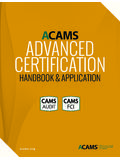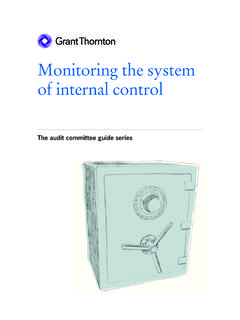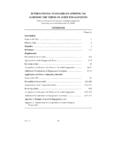Transcription of Laboratory Quality Management System …
1 Laboratory Quality Management SystemHandbookLaboratory Quality Management System ContactsWHO Lyon Offi ce International Health Regulations Coordination58 avenue Debourg 69007 Lyon National Center for Preparedness, Detection and Control of Infectious Diseases (NCPDCID)1600 Clifton Road Atlanta, GA and Laboratory Standards Institute940 West Valley Road, Suite 1400 Wayne, PA 19087 Library Cataloguing-in-Publication DataLaboratory Quality Management System : organization and administration. 2. Laboratories handbooks. techniques and procedures standards. control. Health 978 92 4 154827 4 (NLM classifi cation: QY 25) World Health Organization 2011 All rights reserved. Publications of the World Health Organization are available on the WHO web site ( ) or can be purchased from WHO Press, World Health Organization, 20 Avenue Appia, 1211 Geneva 27, Switzerland (tel.)
2 : +41 22 791 3264; fax: +41 22 791 4857; e-mail: Requests for permission to reproduce or translate WHO publications whether for sale or for noncommercial distribution should be addressed to WHO Press through the WHO web site ( ).The designations employed and the presentation of the material in this publication do not imply the expression of any opinion whatsoever on the part of the World Health Organization concerning the legal status of any country, territory, city or area or of its authorities, or concerning the delimitation of its frontiers or boundaries. Dotted lines on maps represent approximate border lines for which there may not yet be full mention of specifi c companies or of certain manufacturers products does not imply that they are endorsed or recommended by the World Health Organization in preference to others of a similar nature that are not mentioned.
3 Errors and omissions excepted, the names of proprietary products are distinguished by initial capital reasonable precautions have been taken by the World Health Organization to verify the information contained in this publication. However, the published material is being distributed without warranty of any kind, either expressed or implied. The responsibility for the interpretation and use of the material lies with the reader. In no event shall the World Health Organization be liable for damages arising from its use. Printed in FranceLaboratory Quality Management System 1 Table of contentsAcknowledgements ..p 4 Foreword ..p 5 Key words ..p 61. Introduction to Quality ..p 71-1: The importance of Laboratory Quality ..p 8 1-2: Overview of the Quality Management System ..p 91-3: The Quality Management System model ..p 111-4: History of Laboratory Quality Management ..p 141-5: International Laboratory standards.
4 P 151-6: Summary ..p 162. Facilities and safety .. p 172-1: Overview ..p 182-2: Laboratory design ..p 202-3: Geographic or spatial organization ..p 212-4: Physical aspects of premises and rooms ..p 222-5: Safety Management programme ..p 232-6: Identifi cation of risks ..p 252-7: Personal protective equipment ..p 292-8: Emergency Management and fi rst aid ..p 302-9: Summary ..p 323. Equipment .. p 333-1: Overview ..p 343-2: Selecting and acquiring equipment ..p 363-3: Getting equipment ready for service ..p 38 3-4: Implementing an equipment maintenance programme ..p 403-5: Troubleshooting, service, repair and retiring equipment ..p 423-6: Equipment maintenance documentation ..p 443-7: Summary ..p 464. Purchasing and inventory .. p 474-1: Overview ..p 484-2: Purchasing ..p 504-3: Implementing an inventory Management programme ..p 514-4: Quantifi cation ..p 524-5: Forms and logs ..p 544-6: Receipt and storage of supplies.
5 P 554-7: Monitoring inventory ..p 57 4-8: Summary ..p 585. Process control sample Management .. p 595-1: Overview ..p 605-2: The Laboratory handbook ..p 615-3: Collection and preservation ..p 625-4: Sample processing ..p 645-5: Sample storage, retention and disposal ..p 665-6: Sample transport ..p 675-7: Summary ..p 70 Laboratory Quality Management System 26. Process control introduction to Quality control .. p 716-1: Introduction ..p 727. Process control Quality control for quantitative tests .. p 757-1: Overview ..p 767-2: Control materials ..p 777-3: Establishing the value range for the control material ..p 797-4: Graphically representing control ranges ..p 847-5: Interpreting Quality control data ..p 857-6: Using Quality control information ..p 877-7: Summary ..p 888. Process control Quality control for qualitative and semiquantitative procedures .. p 898-1: Overview ..p 908-2: Quality control materials.
6 P 928-3: Quality control of stains ..p 948-4: Quality control of microbiological media ..p 968-5: Summary ..p 989. Assessment audits .. p 999-1: Overview .. p 1009-2: External audit .. p 1039-3: Internal audit .. p 1059-4: Internal audit programme .. p 1069-5: Actions as result of audit .. p 1089-6: Summary .. p 10910. Assessment external Quality assessment .. p 11110-1: Overview .. p 11210-2: Profi ciency testing .. p 11510-3: Other external Quality assessment methods .. p 11710-4: Comparison of external Quality assessment p 11910-5: Managing external Quality assessment in the Laboratory .. p 12010-6: Summary .. p 12211. Assessment norms and accreditation .. p 12311-1: Overview .. p 12411-2: International standards and standardization bodies .. p 12511-3: National standards and technical guidelines .. p 12711-4: Certifi cation and accreditation .. p 12911-5: Process of accreditation .. p 13211-6: Benefi ts of accreditation.
7 P 13311-7: Summary .. p 13412. Personnel .. p 13512-1: Overview .. p 13612-2: Recruitment and orientation .. p 13812-3: Competency and competency assessment .. p 14012-4: Training and continuing education .. p 14312-5: Employee performance appraisal .. p 14512-6: Personnel records .. p 14712-7: Summary .. p 148 Laboratory Quality Management System 313. Customer service .. p 14913-1: Overview .. p 15013-2: The Laboratory clients the customers .. p 15213-3: Assessing and monitoring customer satisfaction .. p 15513-4: Customer satisfaction surveys .. p 15613-5: Summary .. p 15814. Occurrence Management .. p 15914-1: Overview .. p 16014-2: Sources and consequences of Laboratory error .. p 16114-3: Investigation of occurrences .. p 16314-4: Rectifying and managing occurrences .. p 16414-5: Summary .. p 16615. Process improvement .. p 16715-1: Continual improvement concept .. p 16815-2: Tools for process improvement.
8 P 17015-3: Quality indicators .. p 17215-4: Selecting Quality indicators .. p 17315-5: Implementing process improvement .. p 17615-6: Summary .. p 17816. Documents and records .. p 17916-1: Introduction .. p 18016-2: Overview of documents .. p 18116-3: The Quality manual .. p 18416-4: Standard operating procedures (SOPs) ..p 18516-5: Document control .. p 18816-6: Overview of records .. p 19116-7: Storing documents and records .. p 19316-8: Summary .. p 19417. Information Management .. p 19517-1: Overview .. p 19617-2: Elements of information Management ..p 19717-3: Manual paper-based systems .. p 20017-4: Computerized Laboratory information systems .. p 20217-5: Summary .. p 20518. Organization .. p 20718-1: Organizational requirements for a Quality Management System .. p 20818-2: Management role .. p 21018-3: Organizational structure .. p 21218-4: Organizational functions: planning .. p 21418-5: Organizational functions: implementation.
9 P 21618-6: The Laboratory Quality manual .. p 21818-7: Summary .. p 220 Glossary .. p 221 Acronyms ..p 233 References and resources by chapter .. p 235 Notes .. p 243 Laboratory Quality Management System 4 This handbook was developed through collaboration between the WHO Lyon Offi ce for National Epidemic Preparedness and Response, the United States of America Centers for Disease Control and Prevention (CDC) Division of Laboratory Systems, and the Clinical and Laboratory Standards Institute (CLSI). It is based on training sessions and modules provided by the CDC and WHO in more than 25 countries, and on guidelines for implementation of ISO 15189 in diagnostic laboratories, developed by , the CDC and the CLSI would like to acknowledge with thanks all those who contributed to the development and review of this training package, more specifi cally:Adilya AlbetkovaRobin BartelukAnouk BergerS bastien CognatCarlyn CollinsPhilippe DuboisChristelle EstranGlen FineSharon GranadeStacy HowardDevery HowertonKazunobu KojimaXin LiuJennifer McGearyRobert MartinSylvio MennaMichael NobleAntoine PiersonAnne PollockMark Rayfi eldJohn RidderhofEunice RosnerJoanna Zwetyenga AcknowledgementsLaboratory Quality Management System 5 ForewordAchieving, maintaining and improving accuracy, timeliness and reliability are major challenges for health laboratories.
10 Countries worldwide committed themselves to build national capacities for the detection of, and response to, public health events of international concern when they decided to engage in the International Health Regulations implementation process. Only sound Management of Quality in health laboratories will enable countries to produce test results that the international community will trust in cases of international handbook is intended to provide a comprehensive reference on Laboratory Quality Management System for all stakeholders in health Laboratory processes, from Management , to administration, to bench-work laboratorians. This handbook covers topics that are essential for Quality Management of a public health or clinical Laboratory . They are based on both ISO 15189 and CLSI GP26-A3 topic is discussed in a separate chapter. The chapters follow the framework developed by CLSI and are organized as the 12 Quality System Essentials.

















